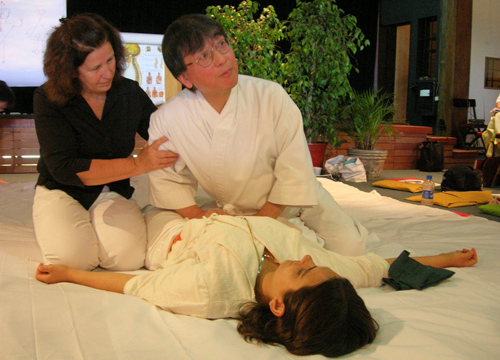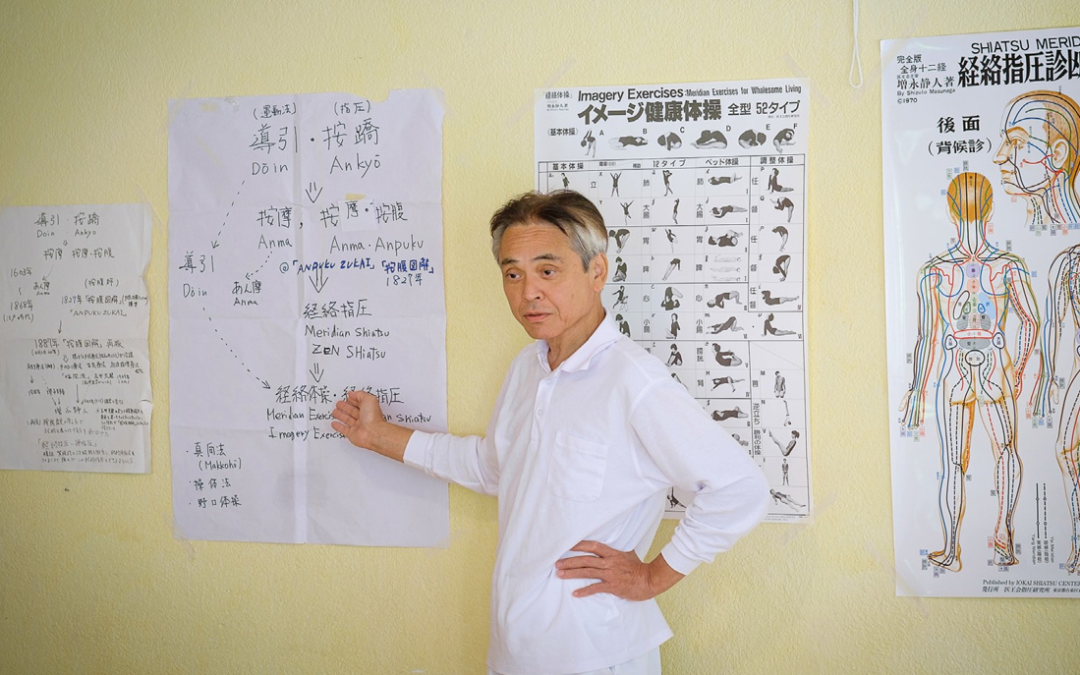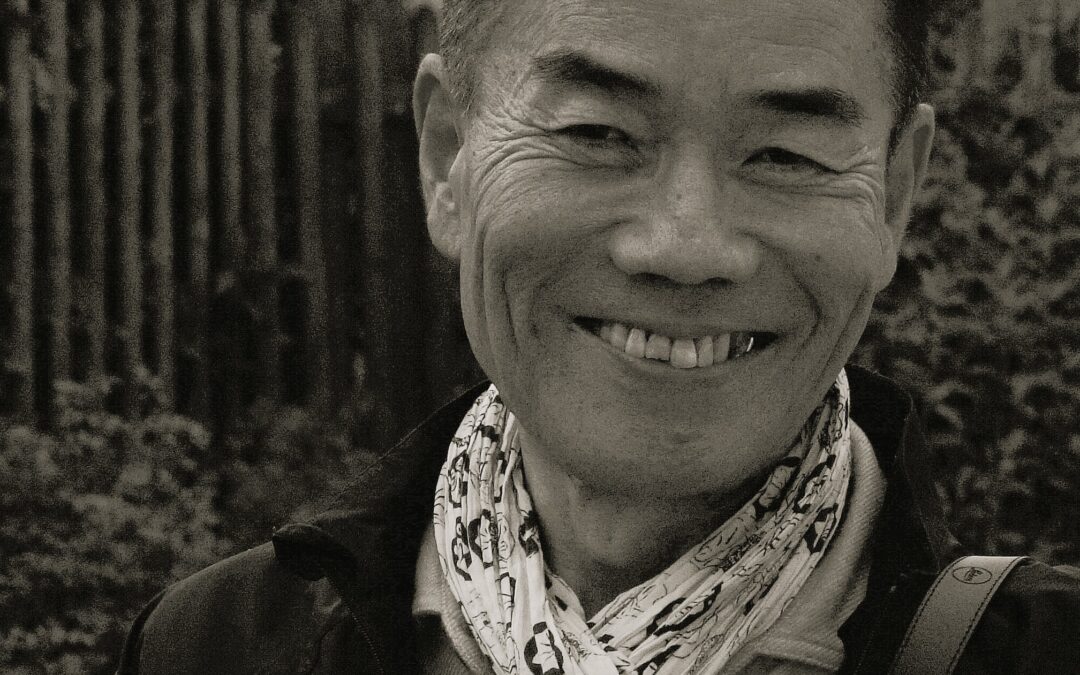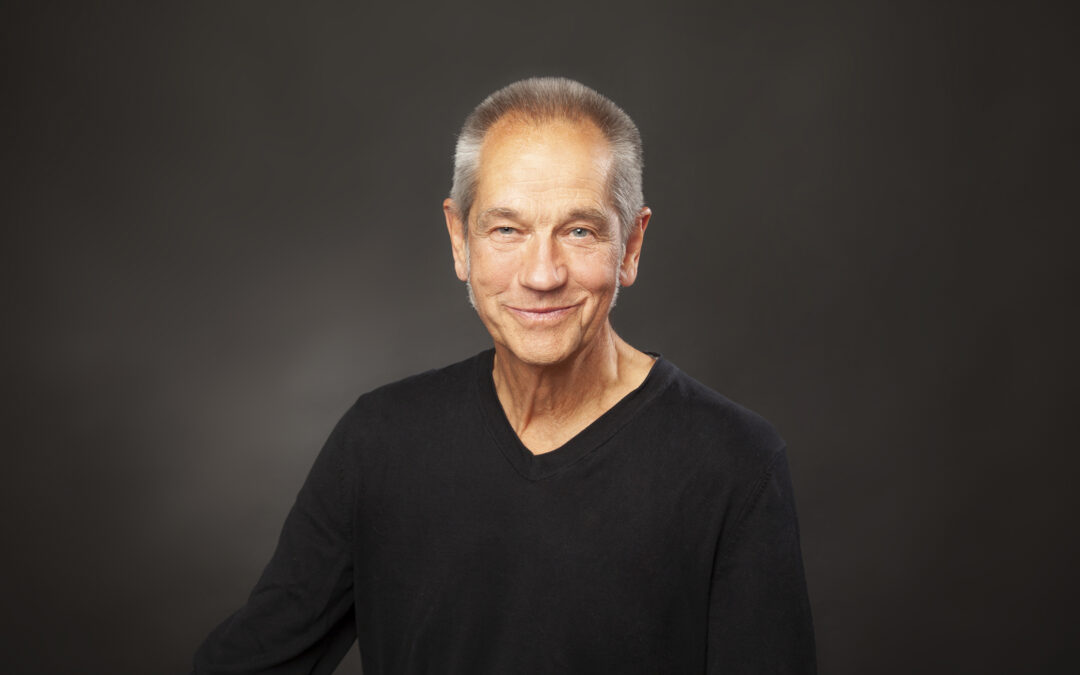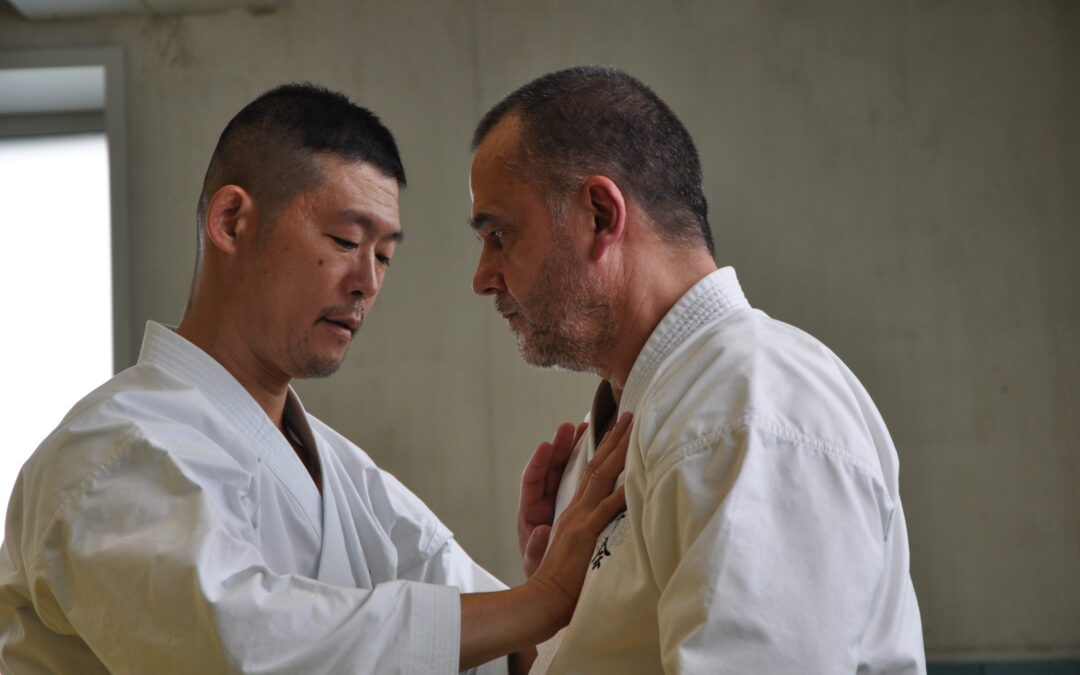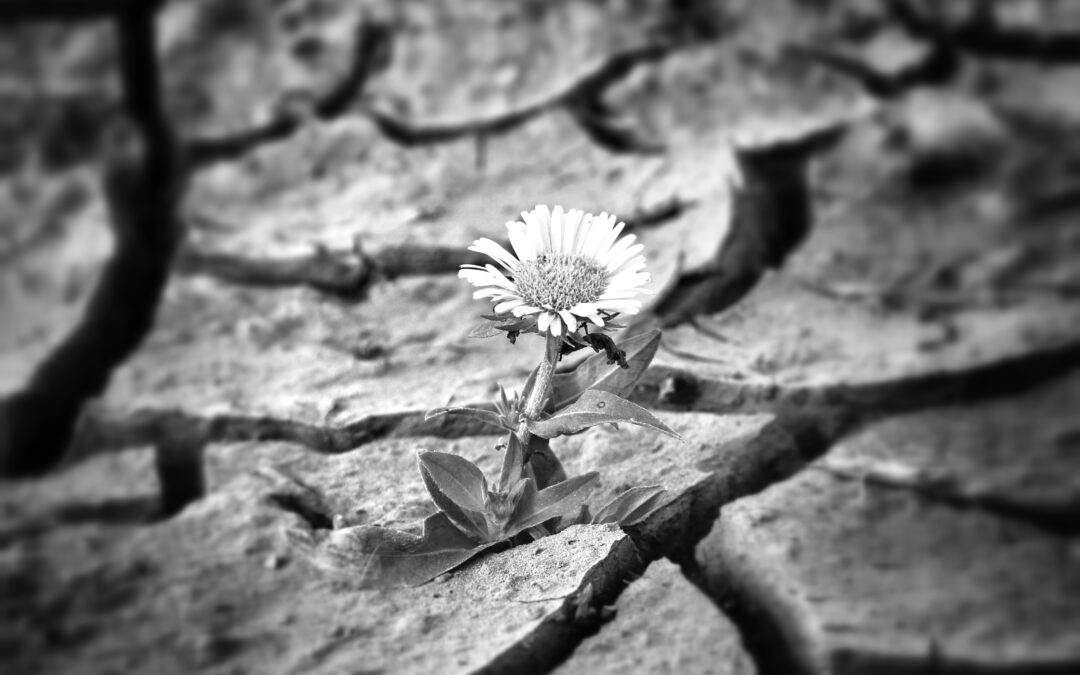Is it still necessary to introduce Ohashi sensei? He is one of the famous Japanese masters who has spread Shiatsu around the world. But if his technique is known, his career is significantly less. This interview allows to better understand who he is, where he comes from and how, with his bare hands, he has forged a reputation that shines today throughout the world.
Ivan Bel: Thank you Sensei for taking the time to talk to me. My first question is an easy one: where were you born?
Wataru Ohashi: I was born in 1944, June 11, in Fukuyama city, Hiroshima Prefecture. When I was born my father was drafted. He was short and small, too old to be sent to the frontline. Instead he was sent to a factory to produce communication weapons. I heard he worked at Toshiba which made vacuum tubes.
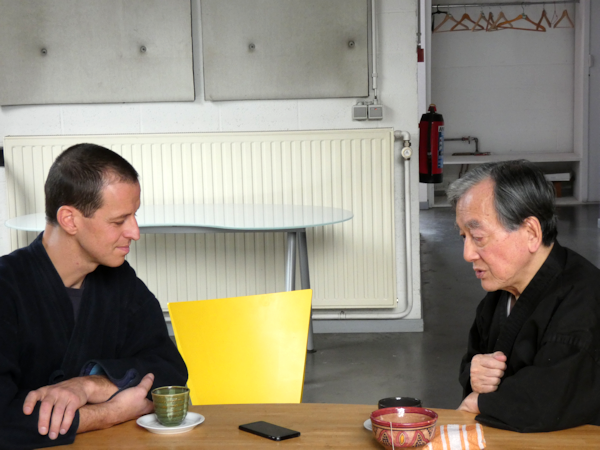
We are right in the middle of the Second World War. And then, in 1945, there was this atomic bomb on Hiroshima. You often talk about that terrible event in your seminars. Why?
The reason is because it’s a life trauma that goes forever in your life, no matter how old you are, you know. It’s beyond your memory. It comes and goes, it’s always there. And the other reason is because how lucky I am to be alive. I survived! In my generation, many people were killed. After the bomb Japan had a terrible time. So it helps me to remember that I survived and I had such a nice life.
After that, did you move away?
Yes, when I was three years old we moved to another city in Hiroshima Prefecture named Mihara. This is where I was raised until 18 years old. And then I went to university in Tokyo, so I left my family. I studied English literature in a college, and especially American black literature such as Richard Wright. My thesis was about “negro” literature in the US. This is what I majored in.
When did you hear about Shiatsu?
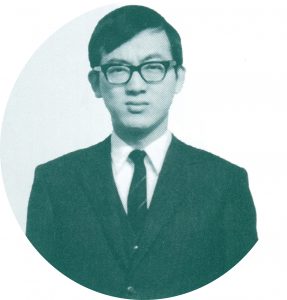
Ohashi student
Well, I wanted to go deeper in the study of black literature, so I wanted to go to America. And also because it was 1968 and, you know, many interesting things happening there. So I asked my professor because he graduated in the USA. He introduced me to a college and helped me to prepare to go to America. But he told me: “You know, it’s not easy to survive there. You’re very small and don’t have so much energy, so you know, get a job or learn some skills in case you need them. Shiatsu is a good technique for you and American people will respect you if you’re talented”. So I attended a short course in Tokyo, studied a little, bit by bit –– I didn’t know it was going to be a lifelong job! (laughs) Then I went to America, and there I entered a famous school for African-Americans named Howard University, in Washington DC. This was the best and most prestigious school for Afro-American Studies. But when I was in my graduate year I needed some money to survive. By accident a new complex named Watergate opened (later on it became quite a notorious), and close by the Kennedy Center also opened. So I start giving shiatsu at the Watergate Health Club, and of course I knew only basic shiatsu, but everybody lliked me and was so fascinated. Many dancers from the Kennedy Center came and they loved my treatments.
In the meantime, I didn’t have good scores in my graduate courses because of my poor English, so the university kicked me out: “You’re not at our school’s standard”, they said, so . . . I was devastated, shocked, and disappointed in myself.
Most of the dancers I knew came from New York, and when I call them for advice they ask me to come to NYC to help them. I left Washington DC at the end of 1972. First I treated only dancers and I specialized in their problems. This was the beginning of a shiatsu career!
I just want to come back a few years when you started learning shiatsu. You said it was bit by bit. With whom? And when?
I studied mainly by myself, watching other people and reading many, many books. So it’s very self-taught.
OK, now you’ve moved to New York. When was it again?
1973, in January.
I imagine you alone in the Big Apple, knowing no one except dancers. How did you manage to become famous?
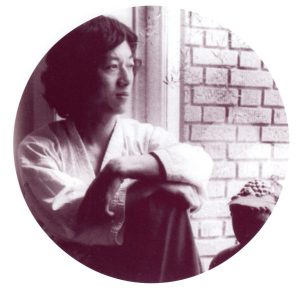 Alone, mmmh, that’s very true! Fortunately, when I was in Washington DC at the Watergate Health Club many dancers came to receive treatments, because they stayed at the Watergate Hotel, dancing in the Kennedy Center. So I knew many of them, and they invited me to New York, so I felt very comfortable when I arrived in New York. And also, because I’m very optimistic I had no fear. You know, after the war, everything in Japan was destroyed and every day was a new one, so hard to live. So when I arrived in New York, everything seemed much easier to me.
Alone, mmmh, that’s very true! Fortunately, when I was in Washington DC at the Watergate Health Club many dancers came to receive treatments, because they stayed at the Watergate Hotel, dancing in the Kennedy Center. So I knew many of them, and they invited me to New York, so I felt very comfortable when I arrived in New York. And also, because I’m very optimistic I had no fear. You know, after the war, everything in Japan was destroyed and every day was a new one, so hard to live. So when I arrived in New York, everything seemed much easier to me.
In which part of the city did you move?
Upper West Side! Near Lincoln Center, near the dancers…
Ah OK. That was clever.
Yes, this way it works. I learned the location for your work is very important for the success of the work you do.
You told me several times already that you read a lot of books, studied many different styles and many techniques. But at what moment did you meet Masunaga?
It’s related to the books, you see. In 1973, I made a small fortune just giving treatments for the dancers. I found there was something wrong because everything went right. So I decided to have a school, because when you focus only on treatments your future is limited. So that same year I started teaching. Then in 1974, I registered our school as a non profit education organization. But I had to study more to be able to give classes. I sent 1,000 US$ to a Japanese oriental medical publisher, called Ido-mo-Nippon. I asked them, please send me any books you’ve got. At that time 1US$ means 365 Japanese yen, so it was 365,000 yen. It was a lot of money for them and they were so surprised of that.
The publisher was so impressed that he sent all his books from his company, but he didn’t have enough. So he got books from other publishers. In all these books, there was only one they just published about shiatsu and they asked me: “Any chance you can translate it into English”? So I looked at the book, which was titled“Shiatsu”, but I never heard about the author named Masunaga. This is the only shiatsu book he published. So I said “Fine, I’ll do it”! Later I sent a letter to Masunaga asking him to see him in Japan. And in 1976, I went back to Japan. I went to Tokyo to see him over the three months. That’s how I met him.
Was he the only one to teach in his school at that moment? Or did you see some of his assistants?
Oh, Mr. Sasaki was there. Mr. Kimura also was there. But Mr. Kishi was not there. He had left to create his own school. But he accommodated me in his residence in Tokyo for one month. He was such a generous guy. I don’t know how, but he was very wealthy and had a big house in Tokyo. So I stayed in his house for one month, three meals a day (laughs) and free lessons. I’ve got such a good memory of him. That was in 1976. Yes, summer time.
In 1977, the English edition of Masunaga’s book was published [Japan Publications], and I invited him the same year in New York, and then again, and again. Four times in total!
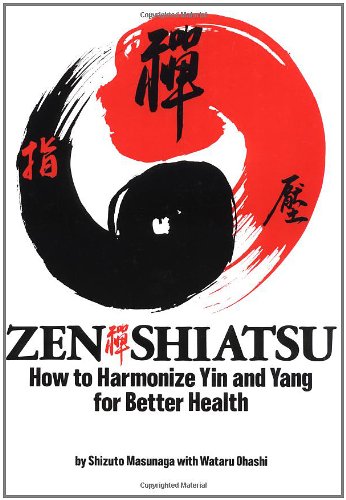
The famous book of Masunaga senseï.
The original title of the book was just “Shiatsu” . Was it you that recommended to change it to “Zen Shiatsu” ?
Yes, you are right. Masunaga’s book in Japanese, which was published by “Ido-No-Nippon” in May 1974, was titled “Shiatsu” . There were two reasons why I put “Zen” in the title. The first reason is, I myself was already practicing Zen, I was involved in Zen movement in America. I was married to my wife, Bonnie, at Shobo-ji, the Zen Center in New York City that year.
The second reason is at that time, I mean early 1970s, “Zen” was a big fashion in America and Europe. Zen Macrobiotics, Zen Garden, Zen Tofu, Zen… etc. Everything from Japan was “zen” and the word “Zen” was considered“groovy” at that time. In his book Masunaga did not mention anything of about “Zen” , but I smelled a “Zen” atmosphere in it. So i put “Zen Shiatsu” as the title. Sensei Masunaga was upset and complained to me ––you “Ohashi, are you trying to sell me cheaply in America using trendy, commercialized title?” “OF COURSE” I replied. “But you will be very famous because of this title, especially after you die.” Zen Shiatsu was published in America in 1977. Sensei Masunaga passed away in July, 1981.
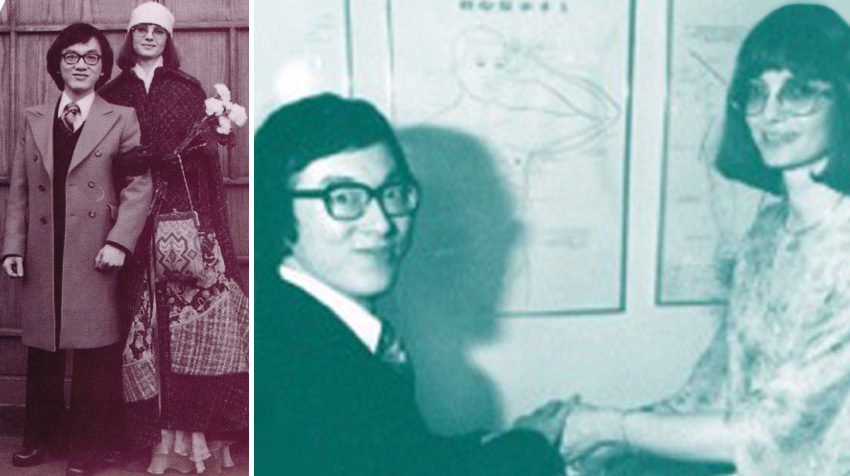
Ohashi’s wedding, with Bonnie, his wife.
What memories do you remember of him? What kind of man was he?
Sensei Masunaga was always studying, writing, improving, creating something new. And I was so attracted to his intellectuality. His high quality of psychological understanding of “human” . Sensei Masunaga made me to be proud of what I was and what I am doing in my life.
And when did you invite Tokujiro Namikoshi?
It was in 1973, December. He was very happy to be invited. Sensei Masunaga made me understand and intellectualize shiatsu; Sensei Namikoshi taught me how to enjoy shiatsu. We had a good time.
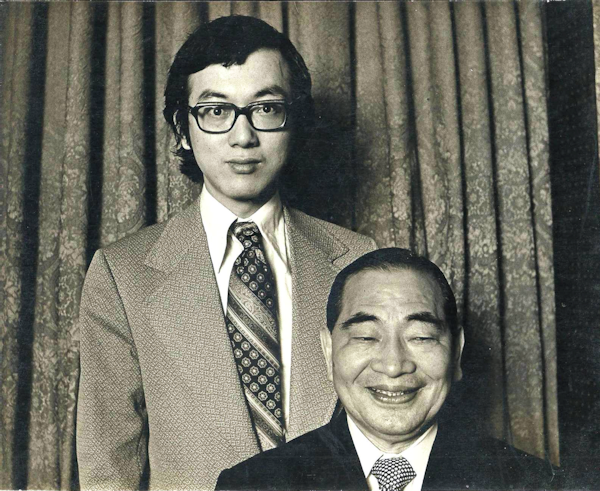
Wataru Ohashi and Tokujiro Namikoshi
Can you describe the man? Do you have an anecdote about him?
Sensei Namikoshi was an extremely generous gentleman. After the workshop that he taught, I brought him all the profits from his class, then he gave it all back to me saying “Ohashi, you just started your school, school needs lots of money. This is for your school.”
In those years in New York, there was also Pauline Sasaki.
I know her pretty well, because she was my student! I don’t know exactly what she was doing before coming to my school. She was a second generation Japanese in America. Pauline studied with me and was one of the first graduates, I think that was in 1977. I trained her very hard to be a teacher and after that she was a very good teacher. At that time, I didn’t have so many teachers you know, and fortunately her English was excellent. So when Masunaga came, she translated some levels. She didn’t understand Japanese so well, but I translated into English. And when I had to translate Masunaga’s book, she helped me to translate. So we were very close.
Did you travel around in the USA in the ‘80s?
Oh yes, I was busy. I was teaching in Canada and America, everywhere, many times.
So you should know all the names of the Japanese shiatsu masters who were teaching in the country. If I tell you Shizuko Yamamoto…
Yes, yes! She is related to macrobiotics. You know at that time only people who had some interest in macrobiotics knew shiatsu. I think she came to America in 1967 or ‘68 and followed Michio Kushi. Then she started teaching shiatsu. I don’t know where she studied shiatsu.
I don’t know!
No. I met her and I took her class in 1973, I think in May. She called her technique “barefoot shiatsu” , but we never use barefoot in shiatsu as you know. So, practically she invented all this, which is fine. I got so much inspiration from her.
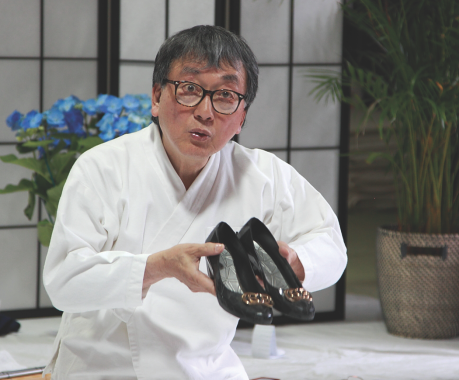
Ohashi demonstrating his incredible diagnosis by the shoes of an individual.
Did you ever cross the path of Yuichi Kawada?
Kawada sensei, I met him in Paris when I was invited by this Zen master, Deshimaru. At that time I think that Kishi was also in Paris. I remember that Kawada was living in Paris, but it’s the only moment I’ve seen him. Only once, yes. He is now in Brussels, no?
Yes indeed! After the ‘70s, a new life began for you. By the way, when did you get married?
I got married in 1977, January 2nd . And my son Kazuhiro was born in ‘78.
Thank you. So during the ‘80s, a new life began for you. You started to create your own style, right?
Yes! There are many reasons for that. You know, I studied Namikoshi and Masunaga’s shiatsu styles, and also many oriental medicine techniques like acupuncture and moxa. I took aïkido lessons (I used to practice kendo when I was a child), and ballet lessons in my 20s. I had to know how the dancers trained, so my shiatsu style started to change slowly. And I’m always changing things, creating new techniques.
Because you’re a curious person?
Yes, I’m always studying new ways, like shiatsu for yoga. And also it’s very important to say that I’m not trained to be a professional shiatsu therapist. I don’t have any license, no teacher that I had to follow. No, I’m completely free to follow my own path.
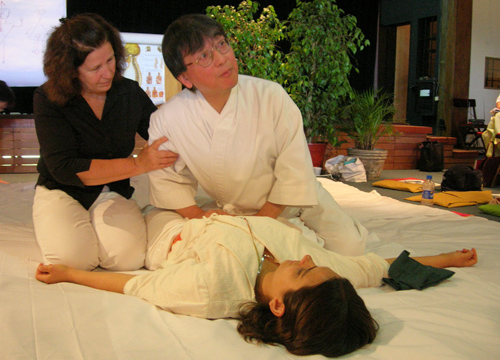
Shiatsu for practitioners first and foremost
So what is the specificity of Ohashiatsu?
My style is very unique, so different from other styles that when I go back to Japan, all the shiatsu therapists ridicule me. That’s why I name it Ohashiatsu, because it’s not their business, but my business (laughs). The most important difference, technically speaking, or attitude, or philosophy, is that Ohashiatsu is for givers, not for the receivers. So, the people who give Ohashiatsu are the first to get better, healthier and happier. The second difference is this cross-pattern technique, which gives a beautiful elegancy to the movement, and power for the giver. And for me, it’s not very important that the client is cured or not. So first of all, that’s why I teach especially for people who are not so healthy, and to people who don’t need to be therapist. For that we established this non-profit organization for education in America as a human development school. That’s a big difference! And everybody loved that, because in our school you know, no dogma, no suffering. You just enjoy, you feel better, and you develop yourself through these meridians and this oriental technique.
There is another point you didn’t mention. In your style, you use at the same time your fingers and knees, so it makes three points of pressure, sometimes four points. What’s the purpose of this?
Because when you’re using cross pattern, everything must be stable, everything must be there. So in the end all your body is moving to one direction. And also because when you’re pressuring one point it can be painful. When you press two points it’s less painful. So if it’s three or four points, you can go further as a giver, with no pain for the receiver.
Recently you’ve changed your official name from “Ohashiatsu®” to “OHASHI Method®”. Does that mean that there’s no more shiatsu inside your style?
Yes! That means that my technique is going beyond shiatsu. Ohashiatsu was more attached to shiatsu issues. But now I’m developing new directions, like face reading for which I’ve got a lot of information about, and I’m finishing one book on that subject. It’s just one example. So “Ohashiatsu” is not big enough to include new developments. That’s why now I call it OHASHI Method.
Now I understand why Stephane Vien, one of your old students in Canada, who is an international teacher now, loves that face reading technique.
Maybe.
By the way, there is also a famous Japanese teacher in Canada, Tetsuro Saito.
Yes, I know him. He is a fine gentleman, very sincere and dedicated to his research on meridians.
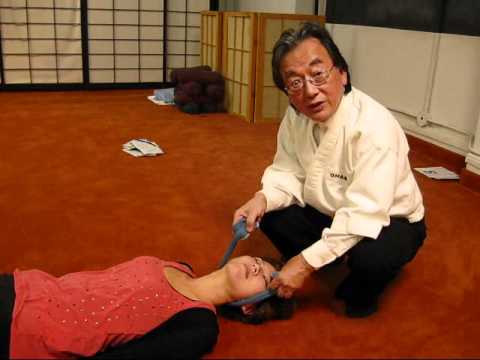
Known for his inventiveness, he notably developed Shiatsu techniques with the help of a tenugui.
To end this interview, you said in this seminar that there is different shiatsu for each person, and everybody should create his own style. Why do you say that?
The reason is very simple. You know, touch is a simple and primitive technique. But, in the end, through this simplicity, it’s so complicated. Why? Especially because it’s so simple. So everybody should create his own style according to their own understanding, their experience, and their body and ability, but also according to the receiver’s point of view. Some are big, some are small, healthy, some sick. So to be a good practitioner you have to study many different techniques and styles, then you create your own style. That’s why I say: “study as many as possible, then bring everything into you and create your own style!”
That’s a nice sentence to conclude. Thank you so much for your time.
Oh, thank you so much.
- Interviewed by Ivan Bel, Wavre, Belgium, April 2018.
- Book review: “Another self” by Cindy Engel - 30 September 2024
- 24-26 October 2025: Master Class in Vienna (Austria) – Shiatsu and martial arts - 20 August 2024
- Lembrun Summer Intensive Course – July 6 to 12, 2025: Digestive System Disorders, Advanced Organ Anatomy, and Nutrition - 4 August 2024
- Anpuku Workshop with Ivan Bel in London – 7 & 8th, June 2025 - 22 June 2024
- Interview with Wilfried Rappenecker: a european vision for Shiatsu - 15 November 2023
- Interview : Manabu Watanabe, founder of Shyuyou Shiatsu - 30 October 2023
